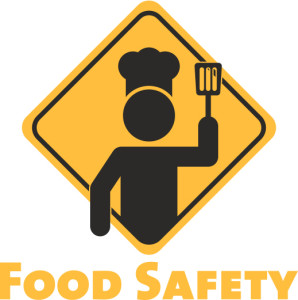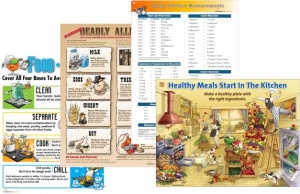I know chefs and home cooks love to be creative. Adding a little of this and a little of that to a recipe to make it your own is part of the fun of cooking. But there are times when creating and doing something new could be dangerous.
 One of the main times that shortcuts or adjustments can be bad for your health is when you’re preserving food at home.
One of the main times that shortcuts or adjustments can be bad for your health is when you’re preserving food at home.
I’m talking specifically about canning. This includes making pickles, jams, jellies, and tomato sauces. Please follow tested recipes from reputable sources.
Food preservation recipes and techniques are constantly being studied and revised. Just because “you’ve always done it this way” or this is how your mother (or grandmother) taught you, doesn’t mean that that technique is the safest and most up to date.
Stay Safe:
Make sure you have up-to-date recipes from a reputable source. When I say reputable, I mean one that has a food science and research background. Just because you found a recipe on the internet or saw it on a cooking show on television does not make it safe.
If you have an old recipe from your grandmother or an older canning book, it’s OK to keep it for sentimental or historical reasons, but please don’t use it to for processing instructions or cooking times.
Food preservation methods, recommendations, and instructions have changed over the years. This includes the guides and instruction sheets that came with an older canner. Make sure you have the latest information available.
The Consequences:
 If the food wasn’t processed safely, then it might spoil on the shelf.
If the food wasn’t processed safely, then it might spoil on the shelf.
Serving that food to people could make them sick, especially if the food has developed molds, yeasts, or bacteria and pathogens.
One of the deadliest bacteria that can thrive in imperfect canning conditions is Clostridum botulinum, commonly known as botulism. According to the Centers for Disease Control and Prevention (CDC), “The classic symptoms of botulism include double vision, blurred vision, drooping eyelids, slurred speech, difficulty swallowing, dry mouth, and muscle weakness.” If not treated, some cases of botulism can lead to respiratory failure and death.
Why take a chance?
Evaluating Recipes:
One of the best reference books available is So Easy to Preserve, a recipe and instruction book from the University of Georgia Cooperative Extension.
Many recipes and research-based food preservation information is also available at the National Center for Home Food Preservation.
Another great reference is the latest (2009) edition of the United States Department of Agriculture’s (USDA) Complete Guide to Home Canning. This book can be found completely online at http://nchfp.uga.edu/publications/publications_usda.html.
Looking at a different collection of recipes? Here are some key elements that many reputable sources have in common.
- It comes from a university, cooperative extension, or USDA source.
- The recipe recommends using a boiling water bath for fruits, jams, jellies, and pickles.
- The recipe recommends pressure canning/processing for low-acid foods such as vegetables, meats, and fish.
- The recipe recommends adding an acid (usually citric acid or lemon juice) to canned tomatoes.
Bonus Tip: Check the dates on the recipes and resources; it’s best that they use the 2009 USDA Guide to Home Canning as a resource. Anything older than that should not be used.
If you’re unsure whether a recipe is safe, then it’s best if you don’t use it.
If you really want to be creative and invent something or preserve something in a new way, then your best bet is to freeze it instead of canning.
There is no sense in spending the time, money, energy, and good produce on a bad product. Worse yet, you could make someone sick.
Cheryle Jones Syracuse, MS, Professor Emeritus at The Ohio State University
PS The images in this post come from the Food Safety section of the free clipart library. Browse great (and free!) illustrations today.





